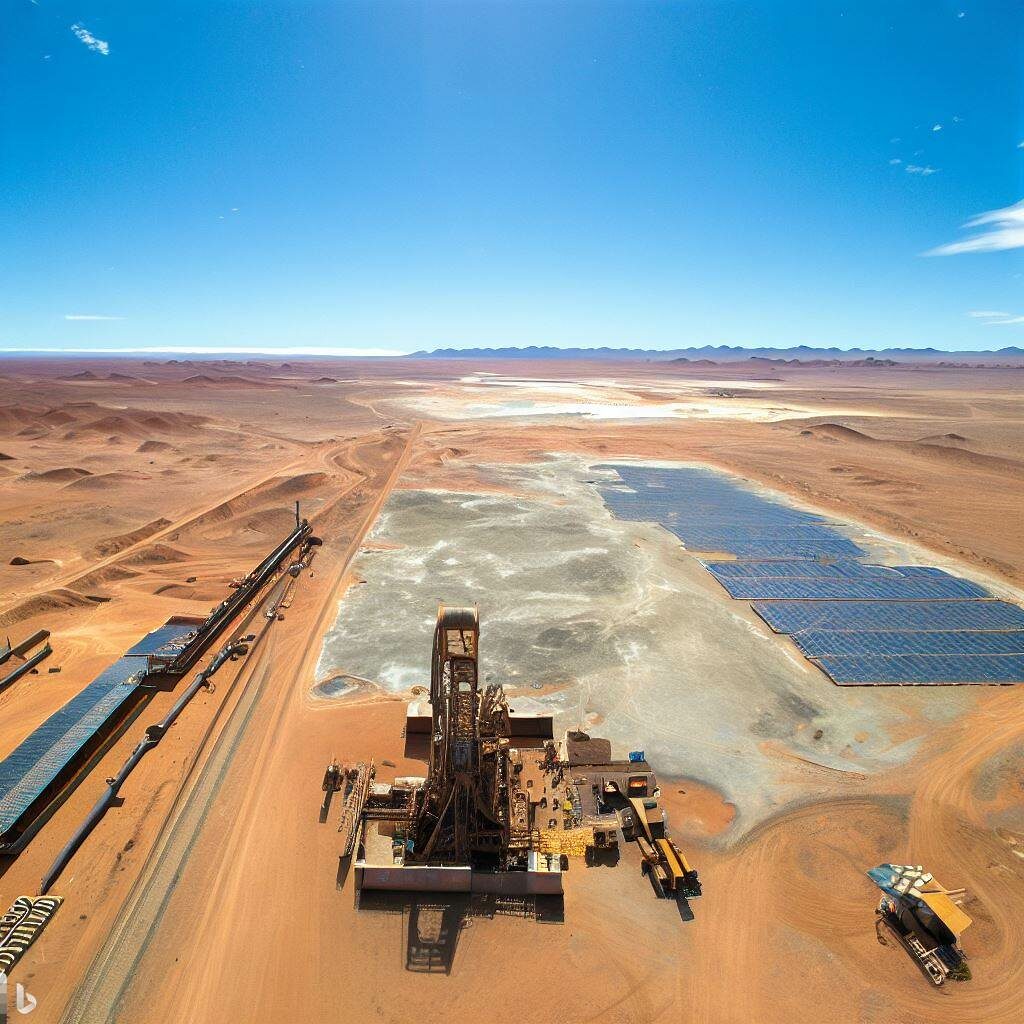The availability of renewable energy in mining changes the way modern mines operate. As they become more aware of the ever-lowering costs of renewable energy, wind and solar power will become a growing trend in powering mining operations around the world in the coming years.
The production of renewable energy in mining is necessary to curb climate change and reverse the associated biodiversity losses. Green energy technologies offer solutions so that the mines of the future can be more environmentally sustainable.
Mining has been one of the most polluting industries on the planet for years. Mining activities have caused environmental damage in various ways, such as air pollution with greenhouse gas emissions, toxic chemicals, global deforestation, and threats to biodiversity.
The environmental damage caused by mining can also lead to health problems, such as cancer and respiratory diseases, fish and crop poisoning. However, due to state regulations, renewable energy in mining has been chosen as the engine of the mining industries, which in the long term makes them less polluting and consequently sustainable.
Benefits and challenges of renewable energy in mining
Energy efficiency and emission reduction
The implementation of more efficient and cleaner technologies has made it possible to reduce energy consumption and greenhouse gas emissions in mining operations.
Some notable practices are:
a) Use of state-of-the-art equipment and machinery with greater energy efficiency.
b) Implementation of green energy systems, such as solar panels and wind turbines, to supply part of the energy needs of the mine.
c) Use of electrification technologies and electric transportation instead of fossil fuels.
Reduced operating costs
Integrating this type of energy into mining operations can lower costs: Energies such as wind, solar, geothermal and others make them more attractive for mining operations.
Carbon footprint reduction
The environmental impacts of mining remain relatively confined to the area surrounding the mine, while the burning of fossil fuels also creates air and water pollution at the power plant, greenhouse gas emissions, and the risk of spills during transporting fuel, thus creating a broader geographic pollution footprint.
However, the extraction of the minerals necessary for the production of renewable energy can have negative impacts on the environment and local communities.
Strategic planning is required to minimize these impacts and ensure a sustainable transition to green energy in mining. The mining sector will need to innovate and rebuild its growth to enable the energy transition.
Mining operations have a significant impact on the environment, and reducing this impact is becoming increasingly important. In recent years, new mining technologies and regulations have greatly improved mining efficiency while reducing environmental impact.
Opportunities for the mining industry
The shift to a clean energy system will drive a large increase in critical mineral requirements, which means that the energy sector is emerging as a major force in mineral markets.
Opportunity to use renewable energy to reduce costs, improve safety and reduce environmental impact. Significant factors, when incorporating alternative energy sources in their operations.
The mining industry has an opportunity to play a significant role in the transition to a clean energy system, but it must be willing to rethink operational processes and transform the industry as a whole.

Technologies to reduce the environmental impact of mining operations
- Autonomous Vehicles: Reduce the environmental impact of mining operations by improving safety, reducing fuel consumption and increasing efficiency.
- Remote Operation Centers: Help mining companies reduce their carbon footprint by allowing them to operate mines from a centralized location, reducing the need for on-site personnel and transportation.
- Automated drilling and excavation systems: Improve the efficiency of mining operations and reduce environmental impact by reducing the amount of waste produced and minimizing the need for labor.
- Automation: Optimize mining operations and help reduce environmental impact by analyzing data and identifying contaminants.
- Green mining techniques: Bioremediation, phytomining, and biomining reduce the environmental impact of mining operations by using natural processes to extract minerals and transform contaminated sites.
- Low Carbon Technologies: Alternative technologies, such as solar panels and wind turbines, decrease the carbon footprint of mining operations by providing a sustainable energy source.
Conclusion
The aforementioned technologies offer encouraging prospects for reducing the environmental impact of mining operations. The mining industry continues to advance in the implementation of more sustainable and efficient solutions, with the aim of balancing the needs of mineral extraction with the conservation of the environment and the protection of ecosystems.
Bibliographic
- www.minigreview.com/energy/renewable
- wfw.com/articles/miningrenewable
- www.worldbank.org/en/news
- www.itnewsafrica.com/2022/05/the-future-for-sustainable-mining

